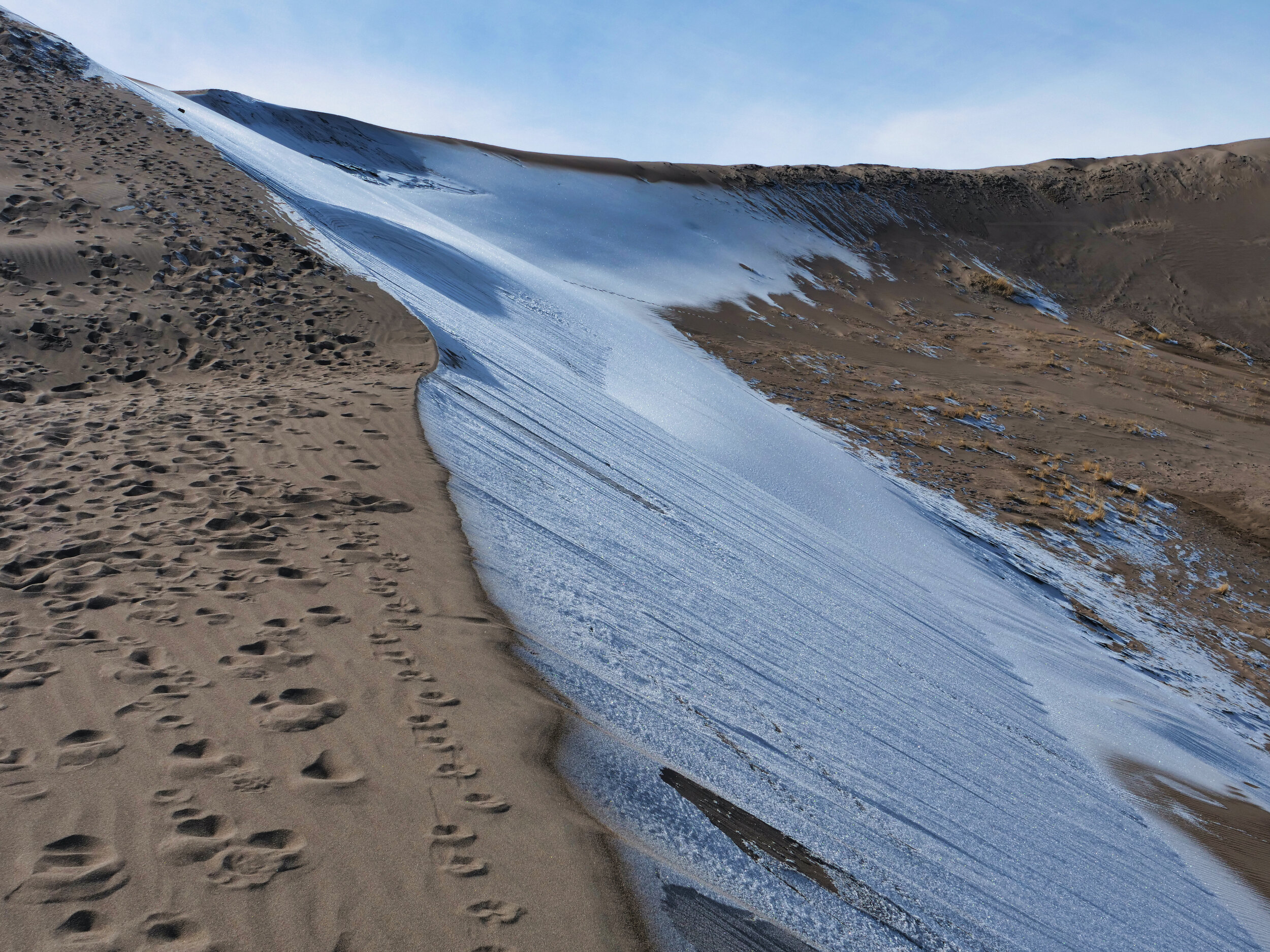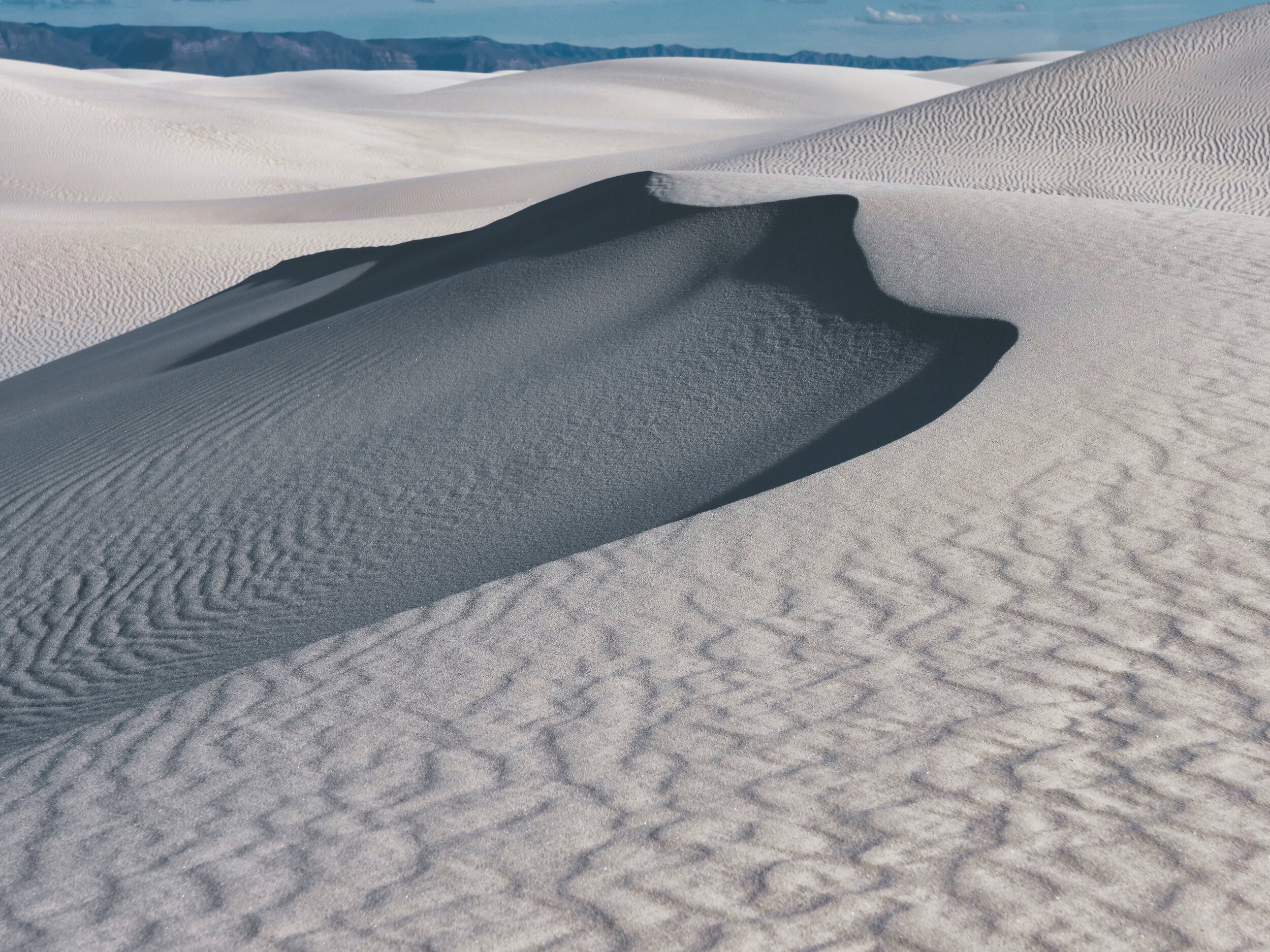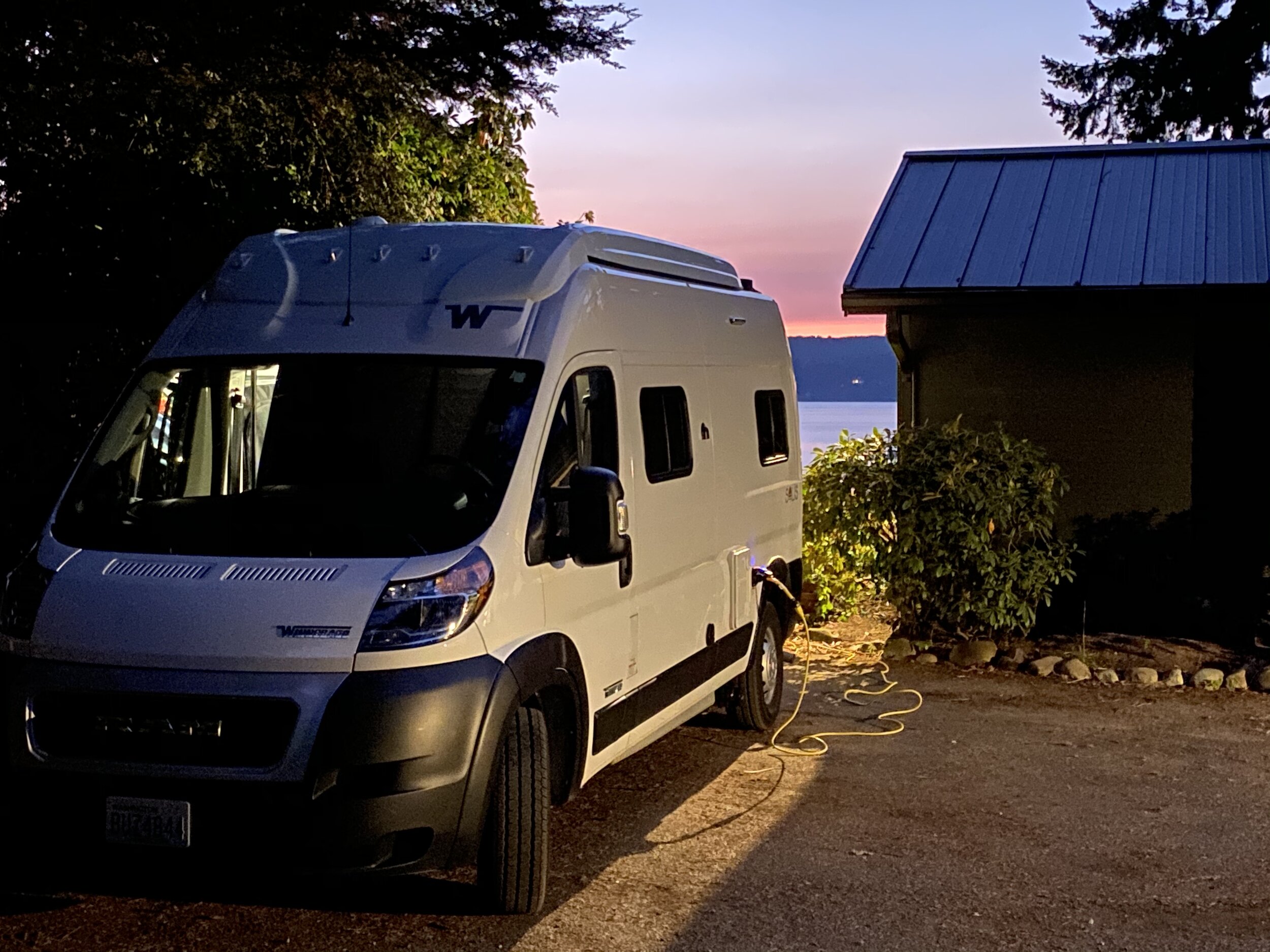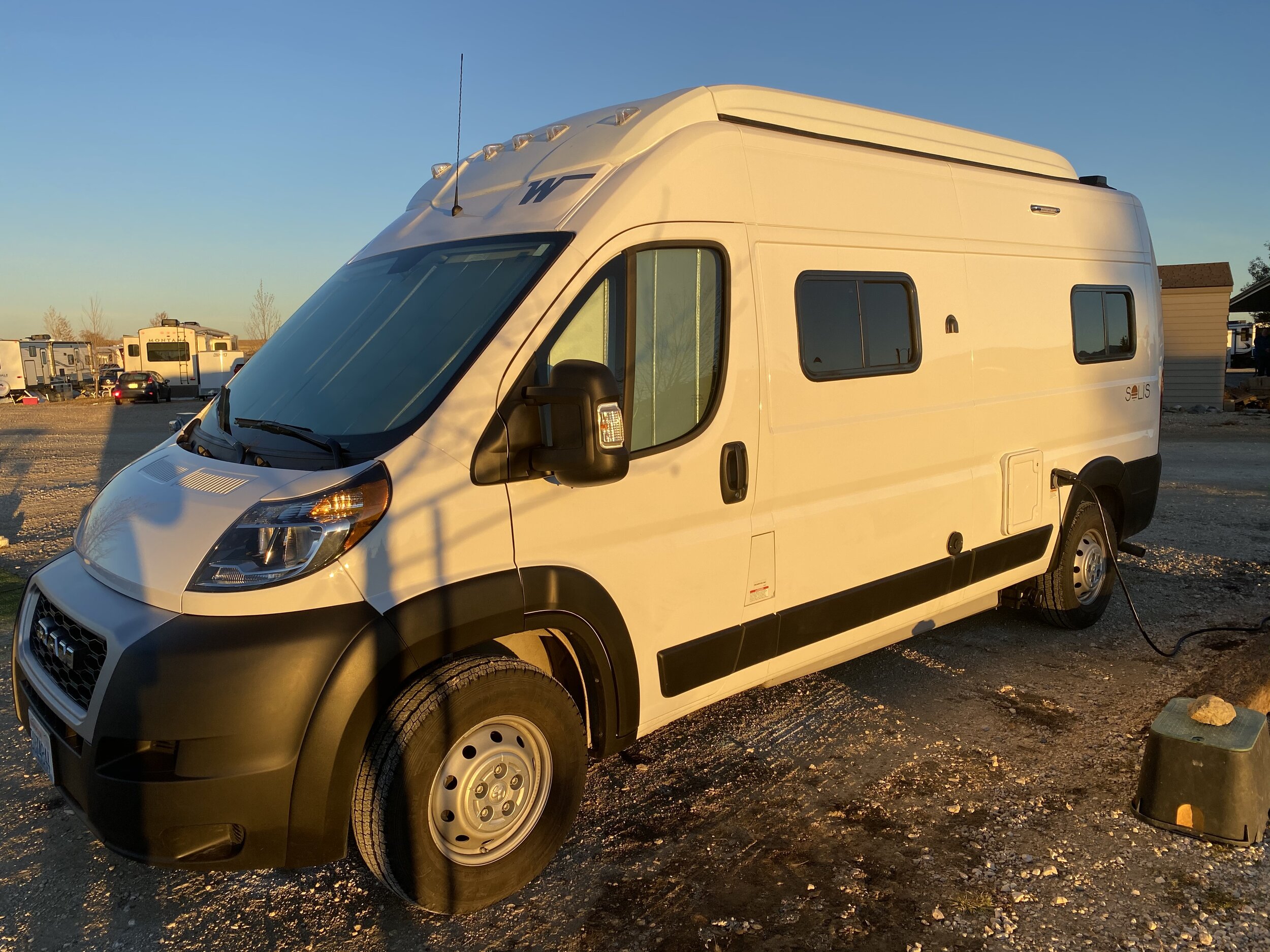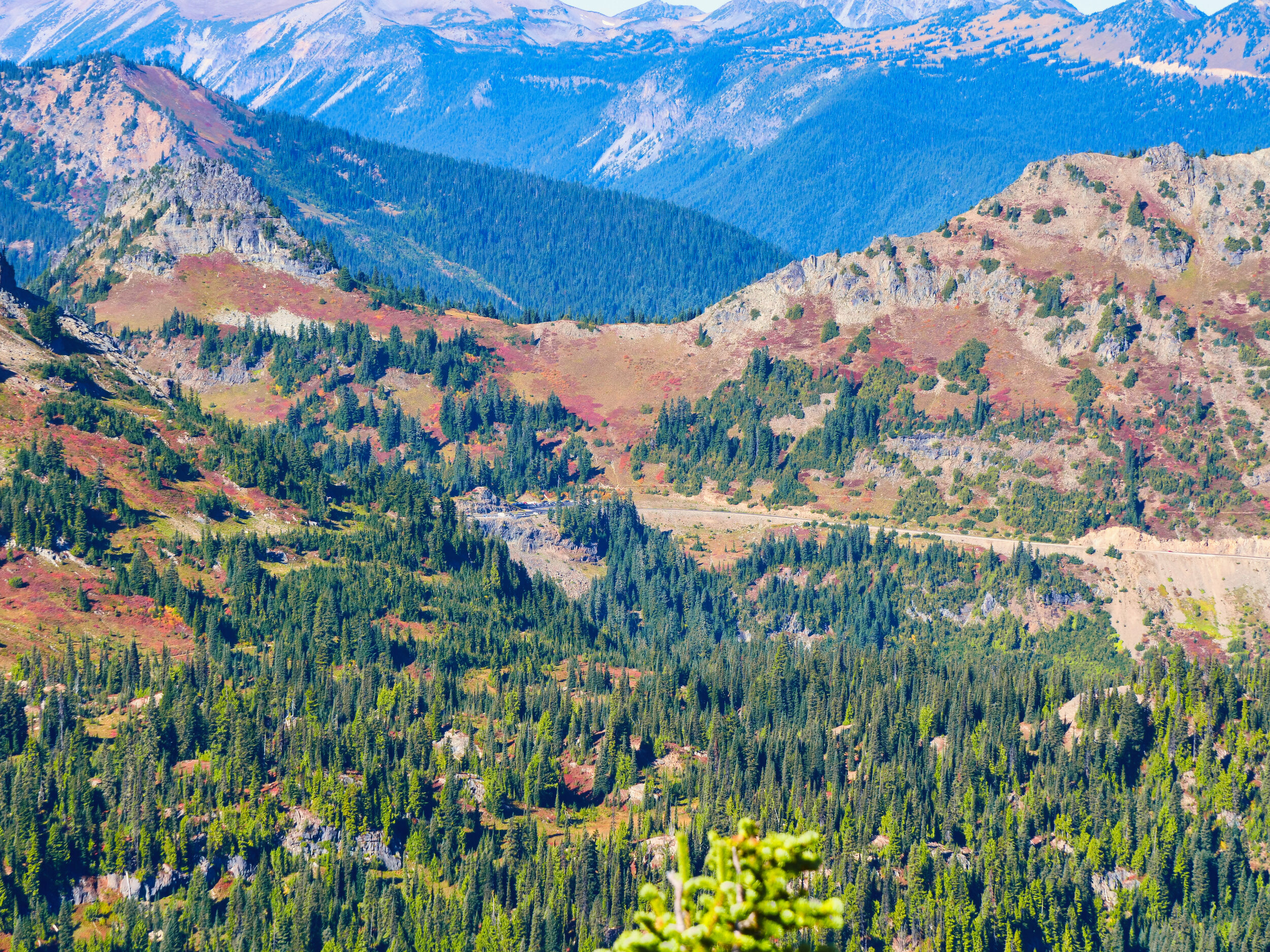• Elecrical and Water I’m assuming anyone looking at this van knows there is no inverter. You can ONLY use the 110 plugs if you are hooked up, but not restricted to 30 amp….I have parked in friends’ driveways and just used their home electrical. Buy a 30 amp adapter and a heavy duty regular electrical extension cord (mine is 30 ft). I also bought a small DC plug in inverter for my laptop, through which I also power external portable drives. Otherwise, my phone and iPad (and GPS/headlamp/InReach/bluetooth speaker etc) can be charged from the various USB outlets. Another consideration is to purchase a 30 amp surge protector, such as this one.
EDIT: based on comments and questions on the Solis FaceBook page, I want to clarify further about the 110 system on the Solis P. The PX will allow use of the 110 outlets when running the generator, which is not on the P. The PX also has an air conditioner and is a few feet longer. So to be perfectly clear, the Solis P 110 outlets cannot be used unless some external power is plugged into the van. A comparison spec graph can be accessed here between the P and the PX.
With no high draw items like a microwave or air conditioner, the simplicity of a DC van is more than adequate for my purposes. Adding an inverter and a lithium battery system to a van like this can escalate the price by as much as $30,000. As for water, I find the 21 gallon fresh water tank adequate for up to 4 days with judicious (single) use, which includes washing dishes and showers. As for the shower, I find the pressure is adequate but certainly not strong. I have also found that setting the water heater to ECO is best as HOT can be too hot for the shower. As an experiment, I was hooked up to city water and wanted to see how long I could shower with heated water constantly running. A few attempts came to about 10 minutes before the water heater couldn’t keep up. I strongly advocate using the shut off valve in the shower head for convenience. The HOT setting is best for washing dishes. It may seem obvious, but if you are hooked up to city water the rear right door must be open for access to the water panel….this doesn’t work in the rain, unless you don’t mind your bedding getting wet. If you have no access to pressurized water to fill the tank, the SANITIZE setting will use the water pump to suck water into the tank. I carry a collapsible 5 gallon water jug. When at national parks with no hookups (but with available water spigots), I would fill the container and schlep it back to the van (good workout), then use the 4 foot hose that came with the van (I cut off one end to fit into the container neck) to fill the tank. The 5 gallon container was also quite useful for washing clothes in a Scrubba, which requires quite a bit (of water) to clean and rinse. For drying, I would put the bar across the rear doors and hang, plus use magnet hooks to hang small items like underwear and socks. Remember to pack some hangers for this purpose, as well as to hang in the heated bathroom. Only recently did I discover that the bathroom heater vent actually has a butterfly valve to keep water from entering the channel. Some owners also purchase a water filter for hookup but I deemed this unnecessary for myself. I use a pitcher water filter for drinking. Lastly, the 220 Watt solar panel was adequate for keeping the batteries topped off for extended days during the summer (assuming camping in uncovered areas) when running the fridge and lights and keeping my phone and iPad charged.
• Heat The buyer must be aware that the Solis has a Truma Combi eco, not the eco plus. The Truma in the Solis cannot run on electric mode alone, it must have LP. Most of the summer, heating wasn’t needed, with the exception of cool mornings. But as fall progressed, it was running more and more. When the really cold temps hit, it was running….even more. Consider that the LP tank capacity is merely 25 lbs, or about 5.7 gallons. Also consider that an LP canister can only be filled to about 80 percent capacity, so the usable amount is closer to 4.5 gallons. If the heater is running consistently, one can go through this pretty quickly, especially considering the insulation gaps in this van. I have found that when the basic 4 light quantity indicator is at one light, I have about 1 gallon left. I say basic because these 4 light indicators (LP, battery, grey tank) will not give you very accurate readings, just more of a generality. Add this to Winnebago’s cost saving decisions. I find the front half of the van in good heating stead, as three outlets are here plus one in the shower. The rear, not so much. I had a container of Nutella freeze in a food bin under the bed when the front of the van never got below 60. Also, when it was very cold (below zero), I could feel the cold through the floor. Rugs certainly help. With all this in mind, winter use will probably have you filling the LP before two weeks are out, unless you like it over 70 degrees. Also be aware that the pop top is not insulated, so all that wonderful heat will just escape out the fabric sides. We have not used the pop top in freezing conditions.




